
Flavor
17:48, 02-Feb-2019
Signature menu for reunion dinner on Chinese New Year’s Eve
Updated
15:33, 03-Feb-2019
By She Jingwei
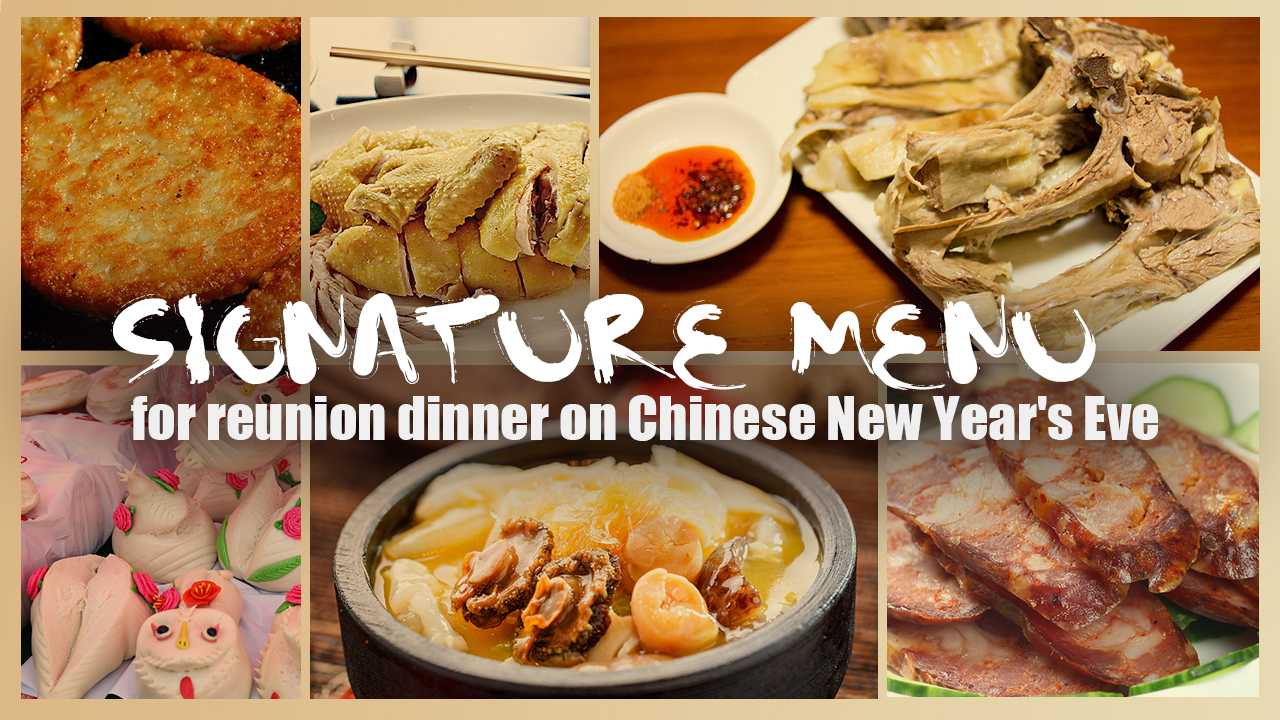
Chinese people who live in different parts of China would stick to various local traditions, and the menu for the reunion dinner on Chinese New Year's Eve varies from place to place.
The family reunion dinner on Chinese New Year's Eve is the most important meal of the year for Chinese people. The grand dinner usually takes families a few days to prepare and cook. The regional representative dishes aren't only delicious but also bring good blessings in the coming year. As New Year's Eve draws near, it's time to join CGTN and see the most indispensable food and dishes for the reunion dinner in different regions!
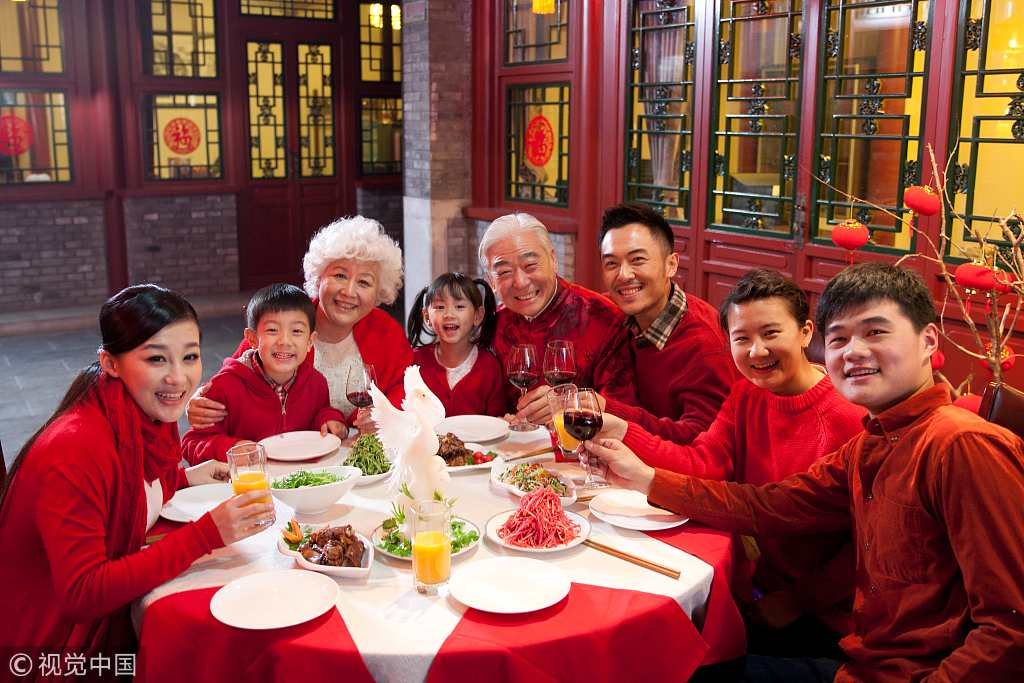
Families gather together to have Chinese New Year's Eve reunion dinner. /VCG Photo
Families gather together to have Chinese New Year's Eve reunion dinner. /VCG Photo
Shandong - Jiaodong Huabobo
Shandong Huabobo or Jiaodong Huabobo, literally meaning "flour flower," refers to flower-shaped steamed buns in east China's Shandong Province. Listed as a Shandong provincial intangible cultural heritage in 2009, this food is often served on important occasions throughout the year, and the Chinese New Year is no exception. It symbolizes vitality for the upcoming year. Locals usually prepare this food starting on the twentieth day of the lunar New Year. In addition, the peony and Mandarin ducks are decorated on the top of the buns to bring good wishes.

Shandong Huabobo. /VCG Photo
Shandong Huabobo. /VCG Photo
Xinjiang – Hand Grasping Mutton Chops
In ancient times, the sheep was considered auspicious and served as important sacrificial food. During the cold winter, people in northwestern Xinjiang often eat mutton to keep warm. Noted as a specialty cuisine in Xinjiang and also a traditional dish for the Uyghur family dinner, Xinjiang's Hand Grasping Mutton Chops is a must-eat dish for family dinner on Chinese New Year's Eve. It's usually served cold with salt or after being simmered or fried with sauce. The mutton is not greasy and goes well with beer.
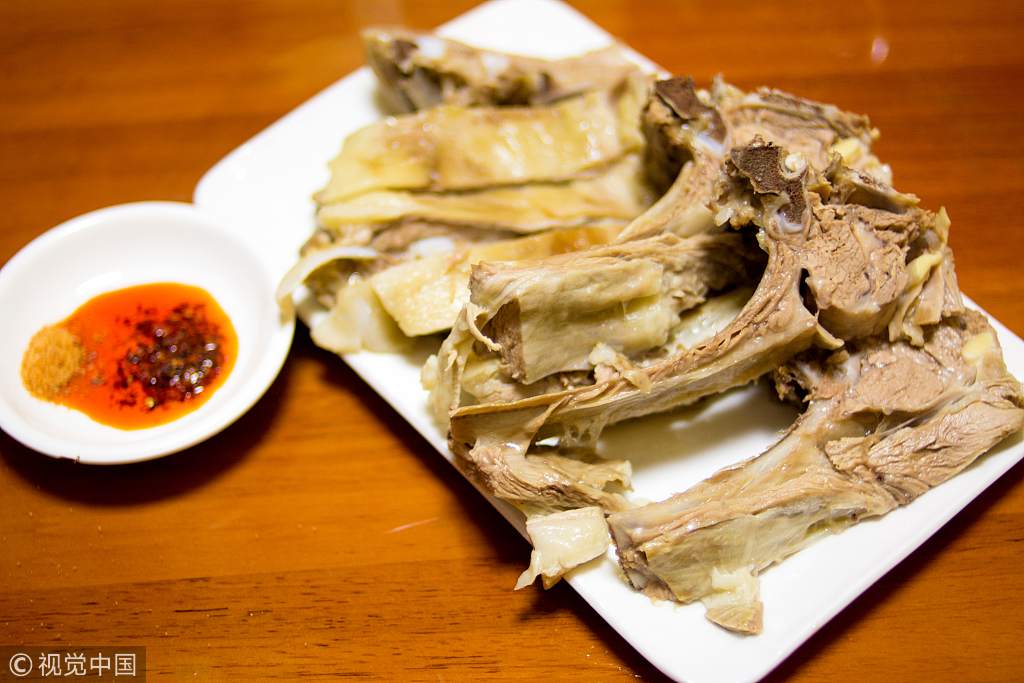
Hand Grasping Mutton Chops in northwest China's Xinjiang Uygur Autonomous Region. /VCG Photo
Hand Grasping Mutton Chops in northwest China's Xinjiang Uygur Autonomous Region. /VCG Photo
Shanxi – Zha Yougao
Zha Yougao, also known as the yellow rice cake, is an important dim sum in Datong County, northern Shanxi Province. As this dish is often used as a special treat for guests from home and abroad, it's undoubtedly noted as the signature dish on the menu for locals enjoying dinner on New Year's Eve or other significant festivals. The fried yellow rice pies are usually eaten with sugar, which is regarded as the best way to express the complete happiness of families. The crispy exterior and soft interior adds to the multidimensional flavor. These yellow fried cakes are best enjoyed when they are still hot.
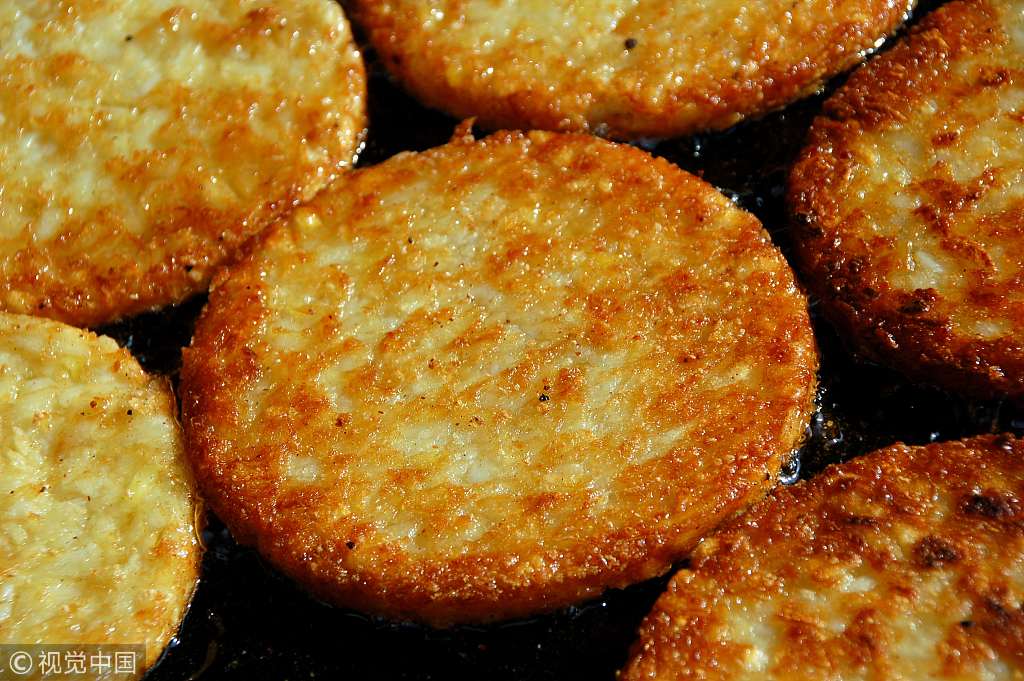
Zha Yougao in Shanxi Province. /VCG Photo
Zha Yougao in Shanxi Province. /VCG Photo
Sichuan – Sichuan-style Sausage
The Sichuan-style sausage is one of the popular dishes in southwestern Sichuan Province. Each year before Chinese New Year's Eve, locals will prepare lots of sausages, which could be eaten throughout the Spring Festival holiday. The sausage often tastes pungent and smoky, and the fattiness of the pork melts perfectly with the chili and spice, making it a must-eat dish for Sichuan locals or tourists to the region.
In addition, people could easily cook the sausages in a pot of rice or use them in fried rice to make the dish more delicious. It's an essential food for a feast on Chinese New Year's Eve.
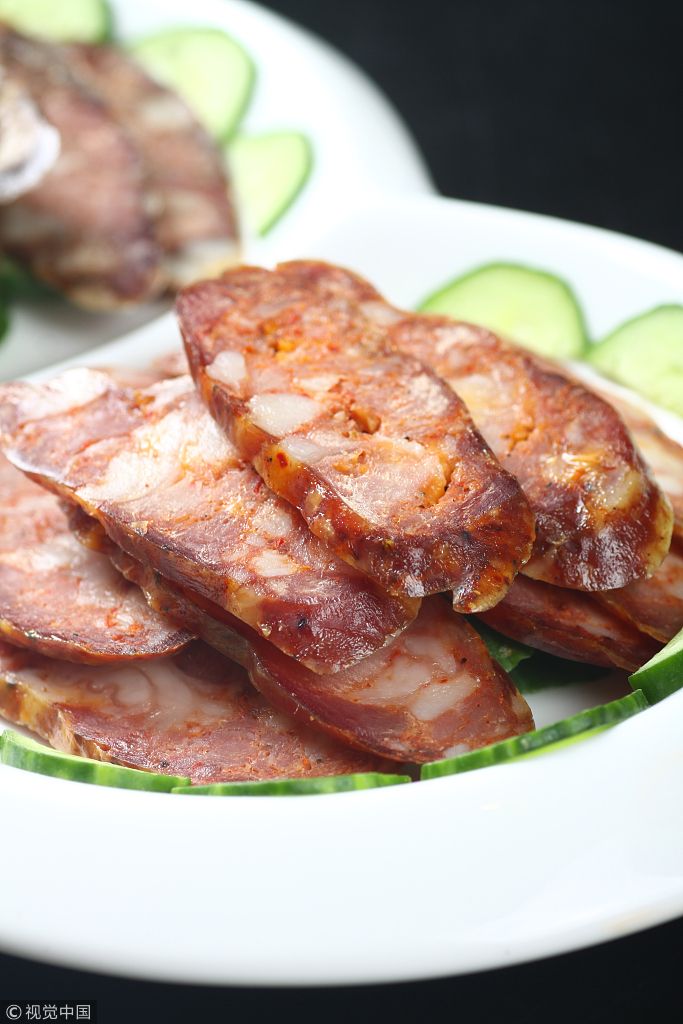
The Sichuan-style sausage. /VCG Photo
The Sichuan-style sausage. /VCG Photo
Fujian – FoTiaoQiang
FoTiaoQiang, also known as the “Buddha Jumping the Wall,” is one of the famous, traditional dishes of southeastern Fujian Province. The dish is an indispensable part of a Fujian family's dinner table. It's a delicacy that combines many exquisite ingredients and boiled for a long time. The main ingredients of this dish include abalone, sea cucumber and pleurotus eryngii. Meanwhile, this dish is very good for people's health from a traditional Chinese medicine point of view. Originated from Fujian, it is popular in many restaurants in the country's southeastern regions.

FoTiaoQiang. /VCG Photo
FoTiaoQiang. /VCG Photo
Hainan – Wenchang Chicken
There is a saying in southern island province of Hainan that "A feast is impossible without Wenchang Chicken." Wenchang Chicken got its name from its birthplace – Wenchang City in Hainan. It's a must of hospitality when people host a party or a banquet.
The traditional way to cook this dish is to boil the chicken in hot water and then put it aside, and then add a mix containing ginger, mashed garlic, soy sauce, salt and fresh orange juice. An additional method is to stew the chicken with coconut, which gives the dish a pure taste that one can never forget.

Wenchang Chicken in southern Hainan Province. /VCG Photo
Wenchang Chicken in southern Hainan Province. /VCG Photo
It's regarded as the signature dish that almost every family in Hainan would prepare on Chinese New Year's Eve.

SITEMAP
Copyright © 2018 CGTN. Beijing ICP prepared NO.16065310-3
Copyright © 2018 CGTN. Beijing ICP prepared NO.16065310-3